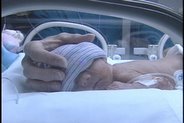Do home air purifiers work?
During a Q and A session following a presentation at an OSHA conference in Harrisburg, PA, a familiar question was asked, "Can VIGILAIR be installed in a home?" While we do not serve the consumer market, there are alternatives such as in-room air purifiers. However, in order to find one that works, you need to find the science and get beyond the marketing of these devices. I found this LA Times article accurate and informative:
"Ionic air purifiers' dirty little secret: They don't get rid of dust
By Chris Woolston, Special to The Times
April 21, 2008The product: Dust, cigarette smoke, pollen and pet dander: With so many irritants floating around our homes and work places, clean air is a hot commodity. Americans spend hundreds of millions of dollars on furnace filters and air cleaners each year. Though some consumers are simply trying to bring a little extra freshness into their lives, many others hope that their investment will help relieve their asthma or allergies.
If you've ever shopped for an air cleaner -- or if you've ever idly flipped through a SkyMall catalog -- you've undoubtedly seen ads for ionic air purifiers, devices that take an unusual approach to clearing the air. Instead of relying on fans to move air through filters, the machines release a steady stream of negatively charged ions that electrify the bits of dust, dander or other flotsam. The airborne particles pick up the negative charge and become strongly attracted to positively charged collection plates inside the machine. (In many cases, they also become attracted to other charged surfaces such as walls, table tops and TV screens.)
Except for a few models that use fans to help suck in the charged particles, most ionic air purifiers work silently. And, as ads are quick to point out, the devices generally don't have any motors or moving parts, and there are no filters to replace.
There's another thing that separates ionic air purifiers from other technologies: To varying degrees, all ionic air purifiers release ozone, a potential pollutant. A 2006 study by researchers at UC Davis found that one popular brand, the Ionic Breeze Quadra, released about 2.2 milligrams of ozone per hour, or about as much as a constantly running photocopier. (Ionic purifiers shouldn't be confused with ozone generators that are marketed as "air cleaners." By design, these devices can release 50 to 200 milligrams of ozone per hour.)
The claims: According to the Sharper Image web site, the Ionic Breeze is "proven effective at reducing airborne allergens and irritants -- with no fan, no motor and no noise." The Heaven Fresh web site says that its purifiers can provide relief from "asthma, bronchitis, hay fever and other respiratory diseases." Heaven Fresh also claims that the ozone emitted by its machines helps clean the air. According to the site, "ozone is one of the purest and most powerful oxidants and germicides known."
The bottom line: Ionic air purifiers have undeniable appeal, but there's a problem: They don't really improve air quality, says Dr. James Sublett, a clinical professor at the University of Louisville; a fellow at the American College of Allergy, Asthma & Immunology; and co-chair of the 2007 ACAAI Healthy Indoor Environment conference. "We [allergists and immunologists] generally don't recommend them," he says. "This is a windmill that I've been tilting at for a number of years."
According to Sublett, the devices don't effectively remove dust, dander and other irritants from a room. Without fans, he explains, they can't collect airborne particles from more than a few feet away. And when even small amounts of dust enter the device, the plates inside quickly lose much of their power to attract more particles. Meanwhile, the charged particles that stick to walls or TV screens haven't left the room and can always billow up again to cause trouble.
The ozone released from the devices is another deal-breaking shortcoming, Sublett says. "Ozone is a pollutant and an irritant. Even small amounts are too much." People who use several units at a time are especially likely to get an ozone overload, he says. One of Sublett's patients noticed a great improvement in her breathing when she turned off the six ionic purifiers in her home."
Air purification for homes should involve both capture and 'kill'. Filters capture and remove irritants, while technologies such as Ultraviolet light destroy pathogens. FIlters take care of the big airborne contaminants, UV deactivates the microorganisms that elude the filters. The balanced approach is best.


1 comment:
Thanks for great information you write it very clean. I am very lucky to get this tips from you. Room Air Cleaners
Post a Comment